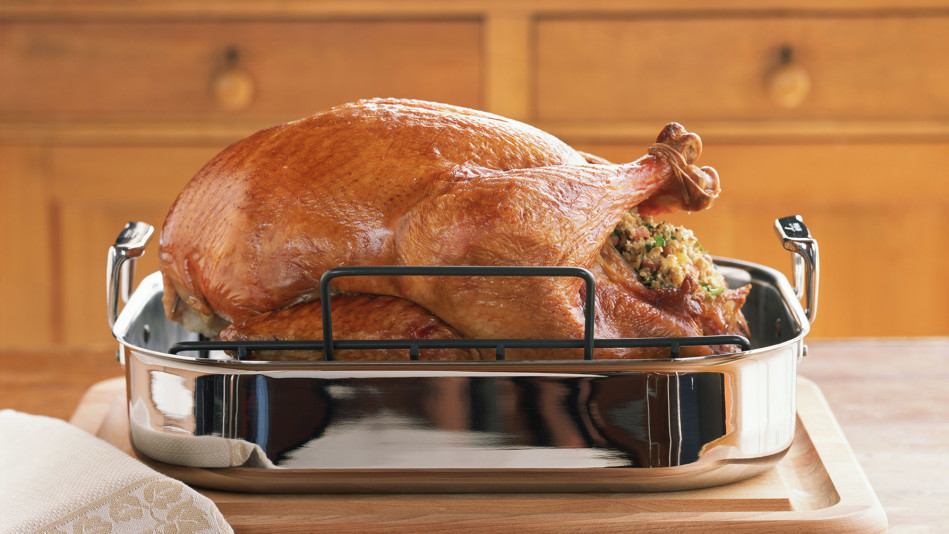The Brilliant Trick for Perfectly Carving a Turkey
It's not rocket science. It's anatomy, actually. And it's way easier than you think.

Photo: Brian Leatart/Getty Images
If every year on the fourth Thursday in November you find yourself cooking the turkey, but ceding the carving of it to someone else in the family, it's time to take control. Cutting the bird into presentable portions is surprisingly simple, especially when you've just spent hours seasoning, monitoring and basting it. Plus, it's one of the most empowering culinary maneuvers we know of.
We talked to a group of experts with about 65 years of turkey-carving experience among them, and they all agreed that the first thing to remember when wielding the knife is to not do it at the table. If you're nervous, the last thing you need is an audience. Furthermore, says Mark Gaier, who, with Clark Frasier, has been serving Thanksgiving dinner to guests for years at their restaurants M.C. Spiedo, in Boston, and MC Perkins Cove, in Ogunquit, Maine, you need a big cutting board (one with a trough to catch the juices is ideal) and plenty of elbow room to get the meat off the bones. A dining room table crammed with side dishes isn't going to give you enough space. Have a nice, big platter nearby, and arrange the cut turkey on it; then carry it to the table and bask in the applause.
As for the actual carving, you'll want an 8- to 9-inch carving knife that's been recently sharpened, along with a two-pronged fork to help steady the turkey as you cut (with a sharp knife you'll be able to cut, not saw). Begin with the turkey breast-side up, and remove the legs first, by inserting the fork into one thigh and separating it (along with the drumstick; you can keep them together for now) using the knife. Use the tip of the knife to free the ball joint that connects the leg to the rest of the bird. Take off the other leg and reserve both for later.
Next: the trick that'll make everything worlds easier.
We talked to a group of experts with about 65 years of turkey-carving experience among them, and they all agreed that the first thing to remember when wielding the knife is to not do it at the table. If you're nervous, the last thing you need is an audience. Furthermore, says Mark Gaier, who, with Clark Frasier, has been serving Thanksgiving dinner to guests for years at their restaurants M.C. Spiedo, in Boston, and MC Perkins Cove, in Ogunquit, Maine, you need a big cutting board (one with a trough to catch the juices is ideal) and plenty of elbow room to get the meat off the bones. A dining room table crammed with side dishes isn't going to give you enough space. Have a nice, big platter nearby, and arrange the cut turkey on it; then carry it to the table and bask in the applause.
As for the actual carving, you'll want an 8- to 9-inch carving knife that's been recently sharpened, along with a two-pronged fork to help steady the turkey as you cut (with a sharp knife you'll be able to cut, not saw). Begin with the turkey breast-side up, and remove the legs first, by inserting the fork into one thigh and separating it (along with the drumstick; you can keep them together for now) using the knife. Use the tip of the knife to free the ball joint that connects the leg to the rest of the bird. Take off the other leg and reserve both for later.
Next: the trick that'll make everything worlds easier.



